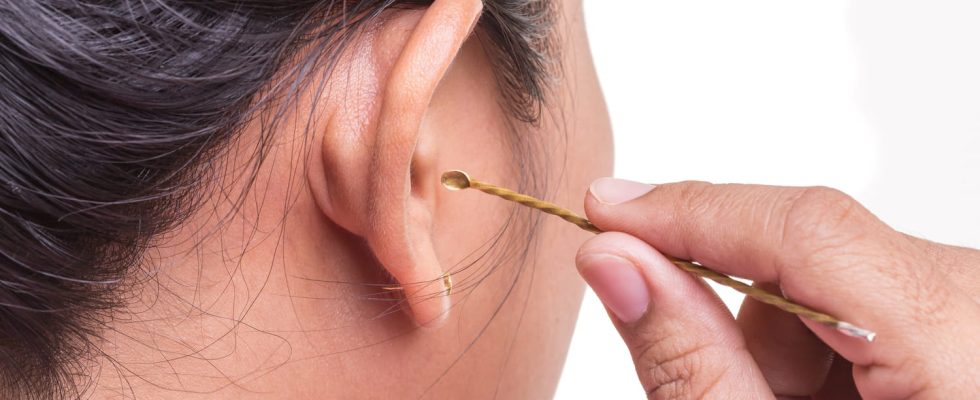The use of cotton swabs to clean the ears is not recommended by ENT specialists. Here are the effective and safe alternatives for clean ears.
Cotton swabs, small cotton buds, are on the one hand pollutants for the environment and on the other hand can be very dangerous for the ears. To avoid it easily, here 4 effective and safe alternatives for the eardrum, recommended by our ENT doctor.
1. Foam ear curette (oriculi)
Normally, when it oxidizes, cerumen (the yellow matter secreted in the external auditory canal) is no longer active and is eliminated spontaneously towards the outside of the canal. It is this visible wax that must be removed. It is therefore not necessary to go further than his little finger would go so as not to attack the ear. “The ideal way to clean your ear is therefore to use a foam curette (also called ear curette or oriculi) which has a shape of little spoon to recover oxidized earwax at the entrance to the duct, on the walls. The advantage is that it is not an injurious object either for the duct or for the eardrum“, assures Dr. Jean-Michel Klein, ENT and President of the National Professional Council of ENT and Cervico-Facial Surgery. Some brands, such as Quies©, Bionix© or Gima©offer this kind of curettes.
2. The spiral tip ear cleaner
Thanks to their silicone tip in the shape of a spiral, these manual or electric cleaners (Ear Wizard® type) make it possible to remove wax from the ear gently and reduce the risk of packing it at the bottom of the ear canal. Simply insert the spiral head into the ear and turn the tool clockwise to grab and extract earwax.
3. His little finger (little finger)

This is still the simplest method, but very effective according to ENT specialists: the little finger (little finger) removes oxidized earwax deposited on the visible part of the ear. Its size avoids going too far into the ear canal. However, you must remember to wash your hands well before introducing (delicately) your little finger in your ear.
4. The ear wash bulb
The pear is only to be used in the event of earwax blockage (therefore not for weekly ear cleaning) and only if the latter is not too packed or adherent to the walls of the ear. This rubber bulb with a tapered tip can be purchased in pharmacy. For safe use, it should be filled withlukewarm water and lightly and gently push its tip into the ear to gently irrigate the canal to release the earwax. Before using it, you have to be sure you don’t have a perforated eardrum, “otherwise the fluid would pass into the middle ear (which must remain sterile) and you would probably inherit an infection“, warns Dr. Olivier Morineau, ENT doctor, in his book “Le livre noir du coton-tige” published by Editions Jouvence. Ideally, this washing should be done after having bathed the ear with an ear solution.
Thanks to Dr Jean-Michel Klein, ENT and President of the National Professional Council of ENT and CCF (Cervico-Facial Surgery) (CNP ENT and CCF).
